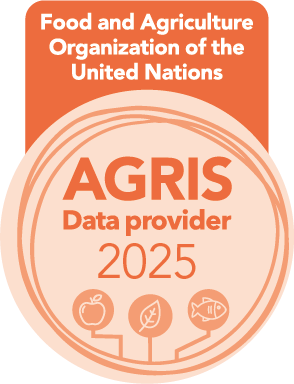Assessment of Stunting and Its Associated Factors in Children Under 2 Years of Age in Tehsil Umerkot
Stunting in Umerkot Children Under 2 Years
DOI:
https://doi.org/10.54393/df.v6i1.155Keywords:
Stunting, Child Nutrition, Exclusive Breastfeeding, Anthropometric AssessmentAbstract
Stunting, a key indicator of chronic undernutrition, remains a critical public health challenge in Tehsil Umerkot, Pakistan, reflecting underlying socioeconomic and nutritional deficits. Objective: To find stunting in children under 2 years old and its association with sociodemographic variables in Tehsil Umerkot Pakistan. Methods: A cross-sectional study was conducted at urban Tehsil Umerkot, Pakistan. A total of 385 respondents were selected from 4 different public healthcare facilities of District Umerkot, through a simple random sampling technique. SPSS version 26.0 was utilized for data entry and analysis. An anthropometric assessment was carried out for the children and height for age was calculated. All children with a z-score below -2 S.D of WHO standards were considered stunted. Pearson Chi-Square was used to investigate the variables linked with stunting. Results: Among the 385 respondents, the majority of the children were female (n= 202, 53%). Mothers of the majority of the children were illiterate (n= 293, 76%). It was found that the majority of the children were stunted (n=360, 96%) out of which 8% (n=30) were severely stunted. Breastfeeding, duration of exclusive breastfeeding, and fruit and vegetable consumption were found statistically significant with stunting (p value<0.05). Conclusions: The majority of the children under 2 years of age in Umerkot were stunted. Various factors were identified that play a protective role against stunting among them exclusive breastfeeding, and fruit and vegetable consumption were important. Routine nutritional assessment and interventions are needed to prevent stunting in Pakistan.
References
Amaha ND and Woldeamanuel BT. Maternal factors associated with moderate and severe stunting in Ethiopian children: analysis of some environmental factors based on 2016 demographic health survey. Nutrition Journal. 2021 Dec; 20: 1-9. doi: 10.1186/s12937-021-00677-6.
Habimana S and Biracyaza E. Risk factors of stunting among children under 5 years of age in the eastern and western provinces of Rwanda: analysis of Rwanda demographic and health survey 2014/2015. Pediatric Health, Medicine and Therapeutics. 2019 Oct: 115-30. doi: 10.2147/PHMT.S222198.
Nshimyiryo A, Hedt-Gauthier B, Mutaganzwa C, Kirk CM, Beck K, Ndayisaba A et al. Risk factors for stunting among children under five years: a cross-sectional population-based study in Rwanda using the 2015 Demographic and Health Survey. BioMed Central Public Health. 2019 Dec; 19: 1-0. doi: 10.1186/s12889-019-6504-z.
Unicef and WHO W. Levels and trends in child malnutrition: key findings of the 2019 Edition of the Joint Child Malnutrition Estimates. Geneva: World Health Organization. 2020.
Debela SA, Sisay D, Negassa M, Daba C, Mesfin Tefera Y, Debela EA et al. Determinants of undernutrition among children aged 6-59 months during the COVID-19 pandemic: A hospital-based cross-sectional study in Ethiopia. Journal of Public Health Research. 2023 Jun; 12(2): 22799036231181174. doi: 10.1177/22799036231181174.
Ashar H, Laksono AD, Supadmi S, Kusumawardani HD, Yunitawati D, Purwoko S et al. Factors related to stunting in children under 2 years old in the Papua, Indonesia: Does the type of residence matter?. Saudi Medical Journal. 2024 Mar; 45(3): 273. doi: 10.15537/smj.2024.45.3.20230774.
Silvanus V, Shakya B, Shrestha SR, Shrestha Y, Shah R. Maternal short stature, household socio-economic status and stunting among under-two children attending an immunization clinic at a tertiary hospital in Kathmandu, Nepal. Nepal Medical College Journal. 2022 Apr; 24(1): 1-0. doi: 10.3126/nmcj.v24i1.44102.
Khan AY, Fatima K, Ali M. Sanitation ladder and undernutrition among under-five children in Pakistan. Environmental Science and Pollution Research. 2021 Aug; 28(29): 38749-63. doi: 10.1007/s11356-021-13492-7.
Mulu N, Mohammed B, Woldie H, Shitu K. Determinants of stunting and wasting in street children in Northwest Ethiopia: A community-based study. Nutrition. 2022 Feb; 94: 111532. doi: 10.1016/j.nut.2021.111532.
Batani J. A Deep Learning Model for Predicting Under-Five Mortality in Zimbabwe. In2023 International Conference on Artificial Intelligence, Big Data, Computing and Data Communication Systems (icABCD). 2023 Aug: 1-6. doi: 10.1109/icABCD59051.2023.10220453.
Hailu BA, Bogale GG, Beyene J. Spatial heterogeneity and factors influencing stunting and severe stunting among under-5 children in Ethiopia: spatial and multilevel analysis. Scientific Reports. 2020 Oct; 10(1): 16427. doi: 10.1038/s41598-020-73572-5.
World Health Organization. Reducing stunting in children: equity considerations for achieving the Global Nutrition Targets 2025.
Fatima S, Manzoor I, Joya AM, Arif S, Qayyum S. Stunting and associated factors in children of less than five years: A hospital-based study. Pakistan Journal of Medical Sciences. 2020 Mar; 36(3): 581. doi: 10.12669/pjms.36.3.1370.
Campos AP, Vilar-Compte M, Hawkins SS. Association between breastfeeding and child stunting in Mexico. Annals of Global Health. 2020 Nov; 86(1): 145. doi: 10.5334/aogh.2836.
Soekatri MY, Sandjaja S, Syauqy A. Stunting was associated with reported morbidity, parental education and socioeconomic status in 0.5-12-year-old Indonesian children. International Journal of Environmental Research and Public Health. 2020 Sep; 17(17): 6204. doi: 10.3390/ijerph17176204.
Sugiyanto J, Raharjo SS, Dewi YL. The effects of exclusive breastfeeding and contextual factor of village on stunting in bontang, east kalimantan, indonesia. Journal of Epidemiology and Public Health. 2019 May; 4(3): 222-33. doi: 10.26911/jepublichealth.2019.04.03.10.
Sukmawati S, Adam A, Sirajuddin S, Nadimin N, Sanas NT. Risk Factors for Stunting in Toddlers in Gowa Regency. Poltekita: Jurnal Ilmu Kesehatan. 2023 Jun; 17(1): 89-94. doi: 10.33860/jik.v17i1.2153.
Moges B, Feleke A, Meseret S, Doyore F. Magnitude of stunting and associated factors among 6-59 months old children in Hossana Town, Southern Ethiopia. Journal of Clinical Research & Bioethics. 2015 Jan; 6(1): 1.
Augusto RA, Cobayashi F, Cardoso MA. Associations between low consumption of fruits and vegetables and nutritional deficiencies in Brazilian schoolchildren. Public Health Nutrition. 2015 Apr; 18(5): 927-35. doi: 10.1017/S1368980014001244.
Permatasari TA, Chadirin Y. Assessment of undernutrition using the composite index of anthropometric failure (CIAF) and its determinants: A cross-sectional study in the rural area of the Bogor District in Indonesia. BMC nutrition. 2022 Nov; 8(1): 133. doi: 10.1186/s40795-022-00627-3.
Downloads
Published
How to Cite
Issue
Section
License
Copyright (c) 2025 DIET FACTOR (Journal of Nutritional and Food Sciences)

This work is licensed under a Creative Commons Attribution 4.0 International License.
This is an open-access journal and all the published articles / items are distributed under the terms of the Creative Commons Attribution License, which permits unrestricted use, distribution, and reproduction in any medium, provided the original author and source are credited. For comments












